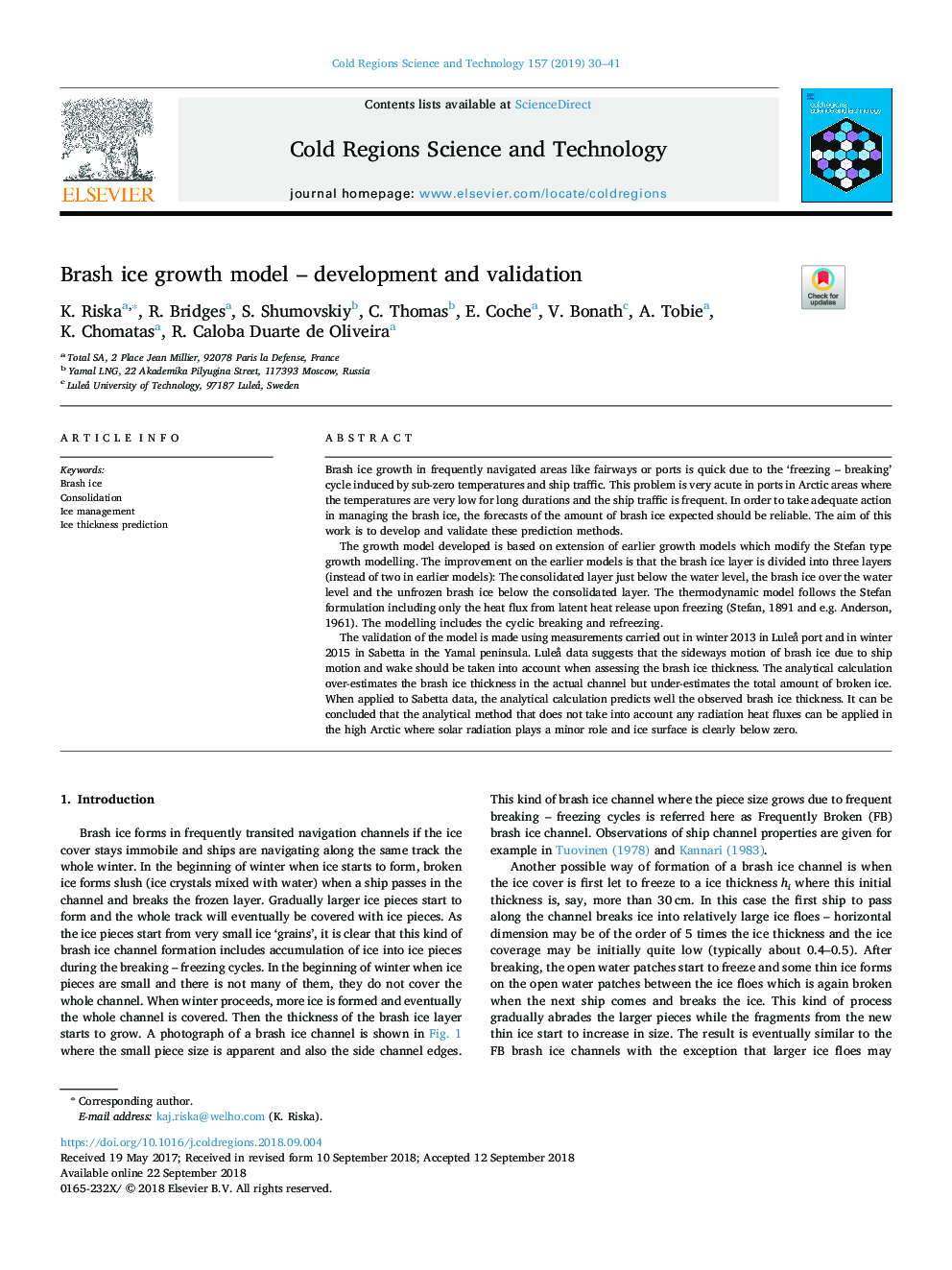| Article ID | Journal | Published Year | Pages | File Type |
|---|---|---|---|---|
| 11016740 | Cold Regions Science and Technology | 2019 | 12 Pages |
Abstract
The validation of the model is made using measurements carried out in winter 2013 in Luleå port and in winter 2015 in Sabetta in the Yamal peninsula. Luleå data suggests that the sideways motion of brash ice due to ship motion and wake should be taken into account when assessing the brash ice thickness. The analytical calculation over-estimates the brash ice thickness in the actual channel but under-estimates the total amount of broken ice. When applied to Sabetta data, the analytical calculation predicts well the observed brash ice thickness. It can be concluded that the analytical method that does not take into account any radiation heat fluxes can be applied in the high Arctic where solar radiation plays a minor role and ice surface is clearly below zero.
Keywords
Related Topics
Physical Sciences and Engineering
Earth and Planetary Sciences
Earth and Planetary Sciences (General)
Authors
K. Riska, R. Bridges, S. Shumovskiy, C. Thomas, E. Coche, V. Bonath, A. Tobie, K. Chomatas, R. Caloba Duarte de Oliveira,
